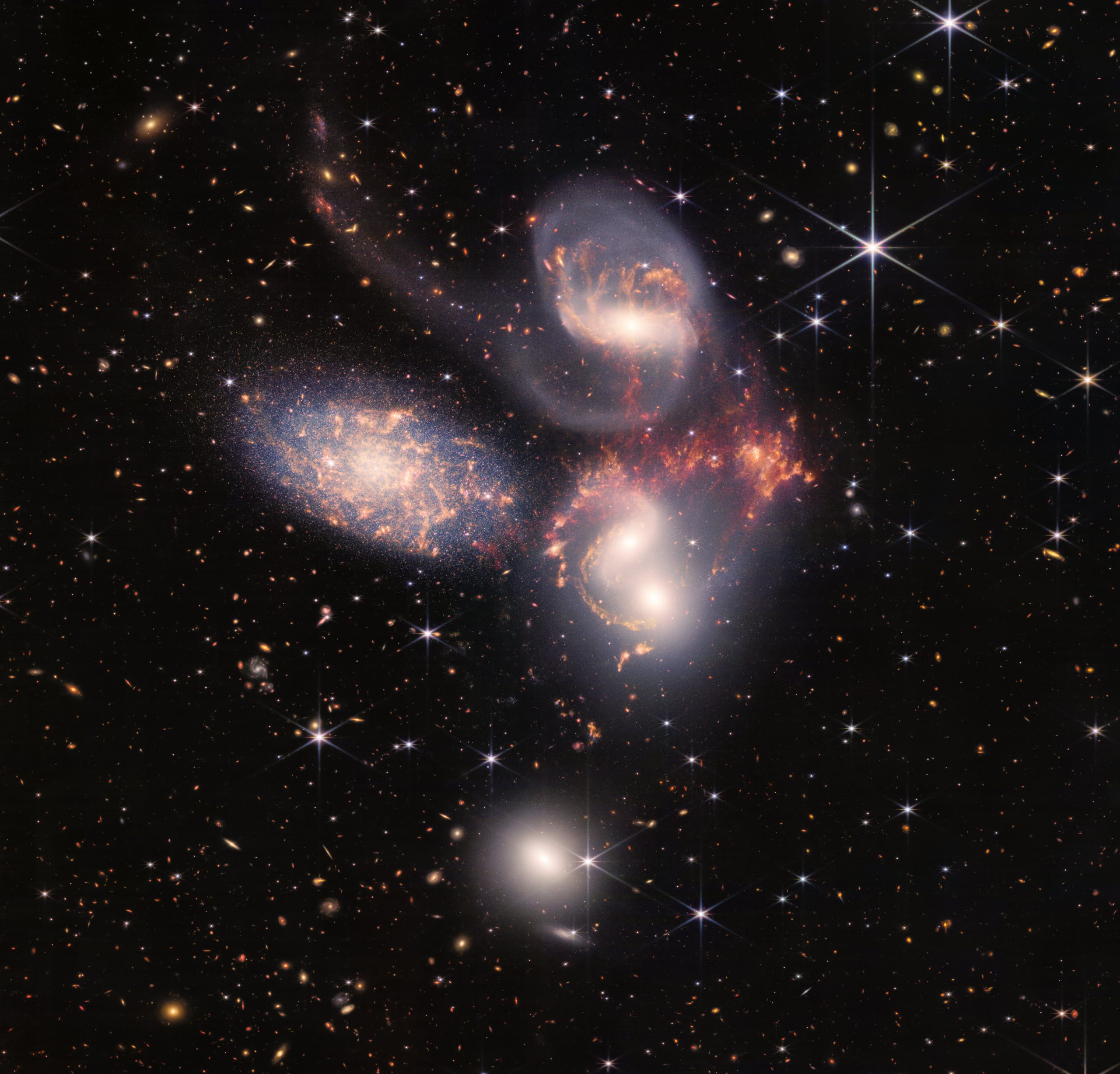James Webb Space Telescope Captures First Images
Special Stories
15 Jul 2022 6:30 AM
ABOVE: The Carina Nebula imaged by the JWST showing a nursery for star formation, gas and dust being blown by solar winds as new stars burst into existence. BELOW: Stephan's Quintet, a cluster of five galaxies in a small region of the sky, four of which locked in a gravitational dance as they merge over hundreds of millions of years.
 https://youtu.be/Kwtbm86Lywk
From NASA:
The dawn of a new era in astronomy is here as the world gets its first look at the full capabilities of NASA’s James Webb Space Telescope, a partnership with ESA (European Space Agency) and CSA (Canadian Space Agency). The full set of the telescope’s first full-color images and spectroscopic data, which uncover a collection of cosmic features elusive until now, released Tuesday, are available at: https://www.nasa.gov/webbfirstimages
Webb’s first observations were selected by a group of representatives from NASA, ESA, CSA, and the Space Telescope Science Institute. They reveal the capabilities of all four of Webb’s state-of-the-art scientific instruments:
https://youtu.be/Kwtbm86Lywk
From NASA:
The dawn of a new era in astronomy is here as the world gets its first look at the full capabilities of NASA’s James Webb Space Telescope, a partnership with ESA (European Space Agency) and CSA (Canadian Space Agency). The full set of the telescope’s first full-color images and spectroscopic data, which uncover a collection of cosmic features elusive until now, released Tuesday, are available at: https://www.nasa.gov/webbfirstimages
Webb’s first observations were selected by a group of representatives from NASA, ESA, CSA, and the Space Telescope Science Institute. They reveal the capabilities of all four of Webb’s state-of-the-art scientific instruments:
- SMACS 0723: Webb has delivered the deepest and sharpest infrared image of the distant universe so far – and in only 12.5 hours. For a person standing on Earth looking up, the field of view for this new image, a color composite of multiple exposures each about two hours long, is approximately the size of a grain of sand held at arm’s length. This deep field uses a lensing galaxy cluster to find some of the most distant galaxies ever detected. This image only scratches the surface of Webb’s capabilities in studying deep fields and tracing galaxies back to the beginning of cosmic time.
- WASP-96b (spectrum): Webb’s detailed observation of this hot, puffy planet outside our solar system reveals the clear signature of water, along with evidence of haze and clouds that previous studies of this planet did not detect. With Webb’s first detection of water in the atmosphere of an exoplanet, it will now set out to study hundreds of other systems to understand what other planetary atmospheres are made of.
- Southern Ring Nebula: This planetary nebula, an expanding cloud of gas that surrounds a dying star, is approximately 2,000 light years away. Here, Webb’s powerful infrared eyes bring a second dying star into full view for the first time. From birth to death as a planetary nebula, Webb can explore the expelling shells of dust and gas of aging stars that may one day become a new star or planet.
- Stephan’s Quintet: Webb’s view of this compact group of galaxies, located in the constellation Pegasus, pierced through the shroud of dust surrounding the center of one galaxy, to reveal the velocity and composition of the gas near its supermassive black hole. Now, scientists can get a rare look, in unprecedented detail, at how interacting galaxies are triggering star formation in each other and how the gas in these galaxies is being disturbed.
- Carina Nebula: Webb’s look at the ‘Cosmic Cliffs’ in the Carina Nebula unveils the earliest, rapid phases of star formation that were previously hidden. Looking at this star-forming region in the southern constellation Carina, as well as others like it, Webb can see newly forming stars and study the gas and dust that made them.
All Weather News
More